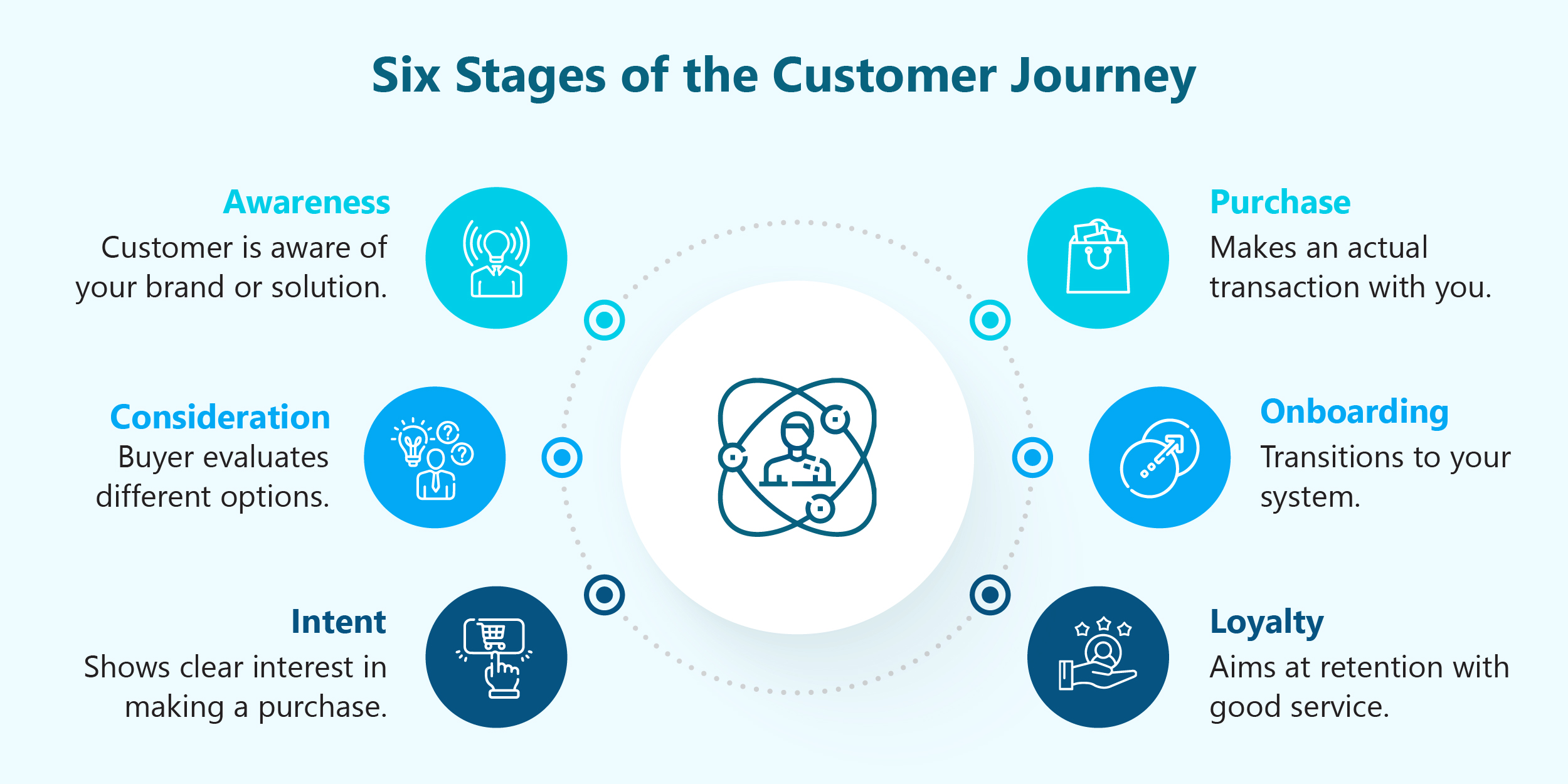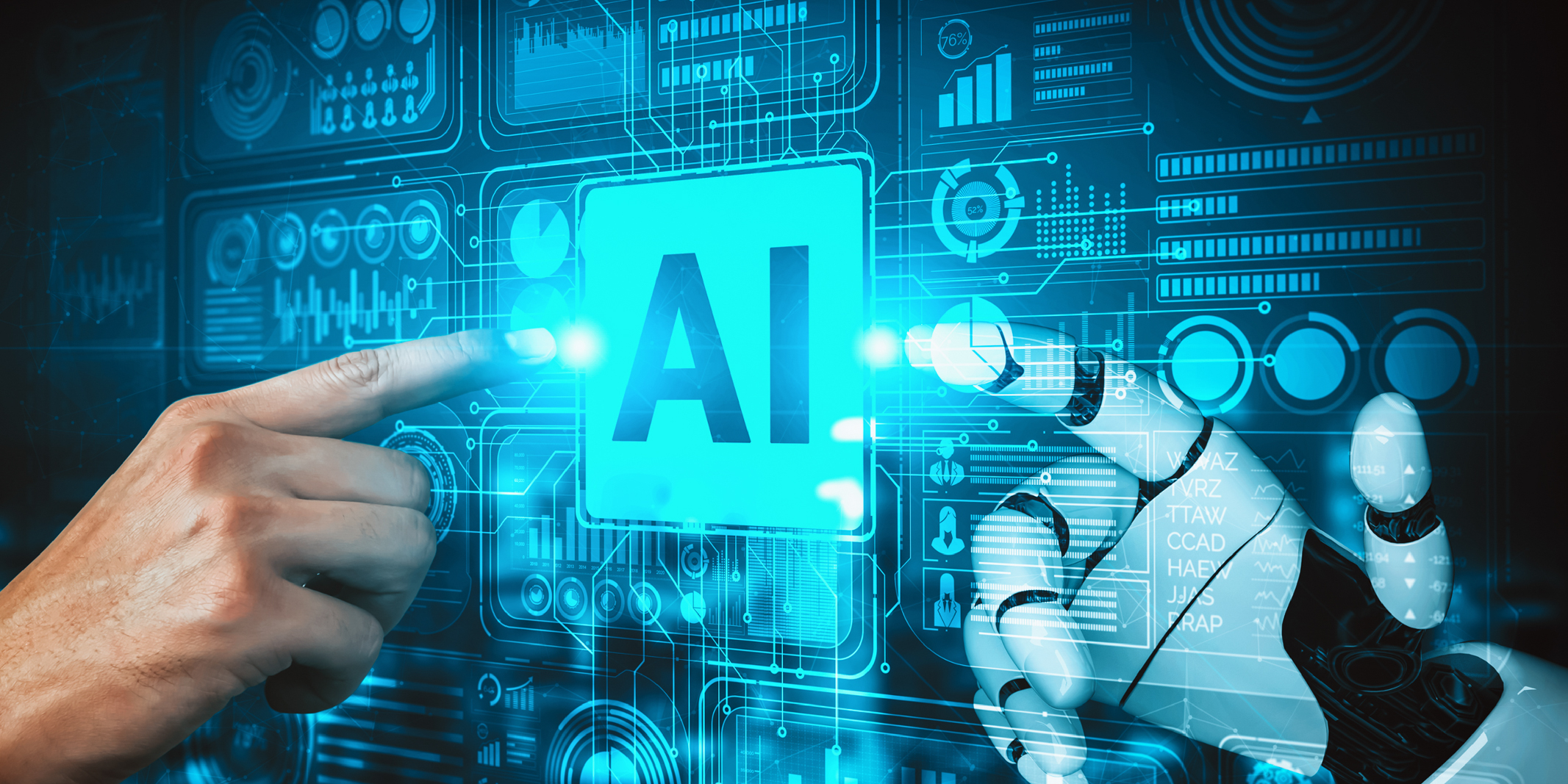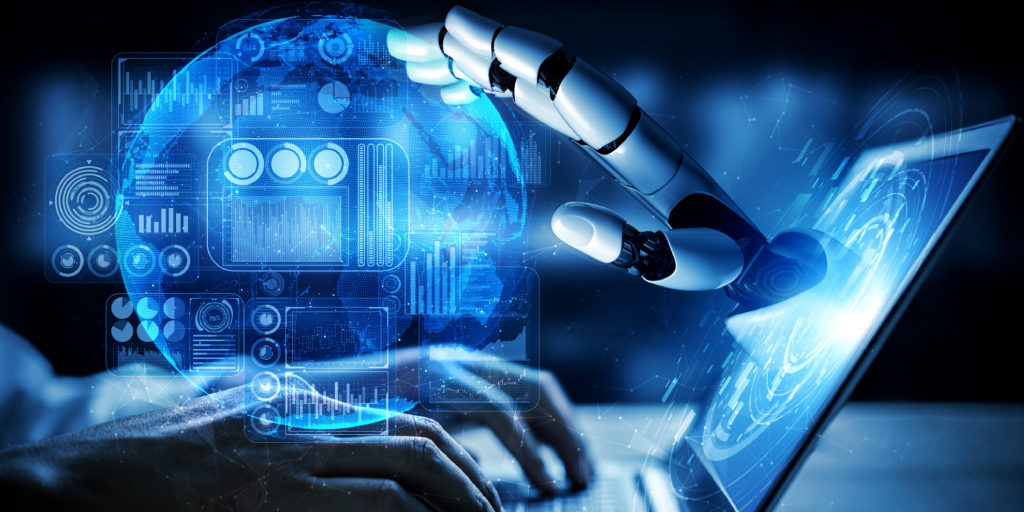The world is entirely AI-driven. We can generate creative text, design stunning visuals, or compose complex code with a simple prompt. AI has infiltrated our daily lives, from streamlining our routines to automating our work. However, as powerful as AI is, it cannot fully replicate the nuances of human interaction.
Customer experience is a prime example of this delicate balance. While AI can handle routine tasks and provide instant responses, it often struggles to understand complex nuances or offer the empathy that customers crave. This is where the human touch becomes invaluable. By combining the efficiency of AI and automation with the empathy and problem-solving skills of human agents, organizations can create exceptional customer experiences.
This blog post will explore the six key stages of the customer journey, highlighting the critical role of human interaction in building lasting relationships. It will also explore how AI and automation can enhance each stage.

The Role of AI, Automation, and Human Touch in Each Stage of the Customer Journey
Stages 1 and 2: Awareness and Consideration
Marketing plays a significant role during the awareness and consideration stages of the customer journey. Awareness creates interest, which then moves to consideration depending on the urgency and relevance to the customer’s needs.
Role of AI:
- Content Creation: Generate content relevant to the customer’s industry and persona.
- Personalization: Tailor content based on browsing patterns and search requests.
- Send Time Optimization: Send emails at optimal times based on customer past email engagement.
Role of Automation:
- Journey automation: Automate the marketing journey based on customer responses to content through various channels.
- AI-powered tools: A journey builder helps build customer journeys across critical channels such as email, ads, and websites. An AI-based personalization builder can enable the personalization of relevant content to a specific audience.
Role of Human Touch
Products such as Marketing Cloud Personalization, Data Cloud, and Microsoft Fabric can be used to identify the customer’s need for assistance. For example, if a customer searches and navigates multiple search result pages or opens more than one search result, this signals that the customer cannot find what they are looking for. This is a good time for the marketing rep or a BDR to give a call and chat with the customer about their needs.
Case Study: A leading tech company struggled with managing separate Salesforce systems. PreludeSys helped them merge the systems and optimize Service Cloud, resulting in a 100% streamlined service experience and 85% operational efficiency boost.
AI, automation, and the human touch: the perfect balance for exceptional customer experiences. Discover additional insights in our recent whitepaper on the power of AI and human touch through the six stages of the customer journey.
Download your free copy today!
Stages 3 and 4: Intent and Purchase
During these stages, the sales team does the heavy lifting, meeting different stakeholders, exploring needs, providing demos, and sharing quotes.
Role of AI:
- Behavior insights: Understand customer behavior signals and involve the sales team at the right time.
- Product suggestions: Offer relevant add-on products and services based on previous buying patterns.
- Risk recognition: Identify risk in deal closure and alert senior leadership for intervention.
- Content creation: Generate draft responses to customer questions and emails.
Role of Automation
- Journey automation: Automate the journey based on customer responses to content through various channels.
- Process automation: With predefined product bundles, prices, and rules, you can automate data entry tasks, note creation, reminders, and quote generation.
- Alerts and notifications: Based on data-driven insights, trigger alerts and notifications for the sales team to connect with the customer.
- AI-powered tools: Generative AI helps craft sales emails, create call summaries, and eliminate manual data entries to update leads and opportunities.
- Pipeline management: Understand the health of opportunities to prioritize leads in your pipeline and identify potential pipeline gaps with accurate forecasts.
Role of Human Touch
Strategic Intervention: Use products such as Marketing Cloud Personalization, Data Cloud, Einstein Activity Capture, Salesforce Revenue Lifecycle Management, or similar tools to identify signals that require human intervention or leadership team involvement.
For example, customers who visit the Pricing page, download the implementation guide, review multiple quotes, and read customer reviews are signals for human intervention to eliminate risk and accelerate deal closure.
Stages 5 and 6: Onboarding and Loyalty
The customer success team is critical in retaining, growing, and ensuring lifelong, happy, and loyal customers.
Role of AI:
- Personalized recommendations: Offer customized recommendations based on user adoption.
- Product features: Recommend new products and services and uncover new features based on usage data.
- Predictive insights: Provide key insights during their journey and an omni-channel self-service experience.
- Onboarding assistant: Automate the onboarding journey with an assistant that takes the customer through the entire process.
- Knowledge recommendations: Suggest relevant knowledge articles and how-to guides to the users based on their product usage.
- Notifications: Notify the product team proactively of any issues.
- Gamification: Automate or gamify rewards and recognition for constant product adoption and following best practices.
Role of Human Touch
- Proactive outreach: Leverage products such as Data Cloud, Service Cloud, Microsoft Fabric, or similar products to anticipate customer needs and proactively reach out to address product questions or concerns.
- Strategic intervention: Continuously mine usage data to identify signals that require intervention by the customer success manager or others to provide a positive customer experience.
Don’t let AI and automation overshadow the importance of human touch. Learn how to optimize your customer journey with the perfect blend of all three. Download our whitepaper for in-depth insights on the power of AI and human touch through the six stages of the customer journey.
Conclusion
No matter how advanced our technologies become, humans will always need compassion, empathy, and relationships. To build long-lasting customer relationships, we must integrate the human element into our customer experiences. This upholds the importance of technology. AI and automation are essential for improving customer experience, but having the right balance is the secret sauce for long-term success.
In this blog, we’ve unpacked strategies for crafting exceptional customer journeys that blend AI, automation, and the human touch. Now, it is time to translate insights into action. But where do you begin? DemandBlue is a subsidiary of PreludeSys that excels at bridging the gap between technological advancement and the human touch for empathy and emotion.
As a leading Salesforce service provider, we leverage automation to personalize the buyer’s journey while ensuring the human element remains at the forefront. Our expert team designs tailored solutions that empower you to cultivate meaningful connections and drive long-term success. We will help you use Salesforce’s power to personalize experiences, automate vital touchpoints, and empower your human agents to deliver that magic touch. Contact us to learn more about our specialized solutions for the Technology industry.
🎁 Bonus: A free customer journey assessment template is included to help you get started.










